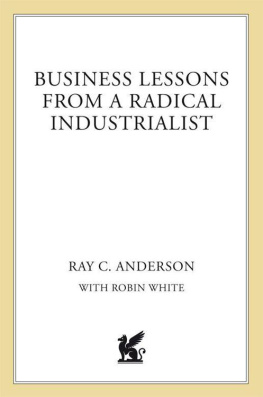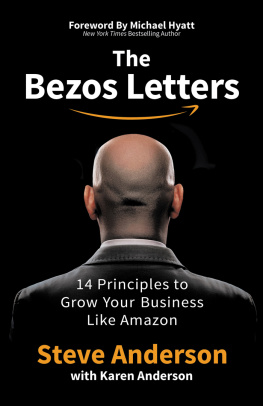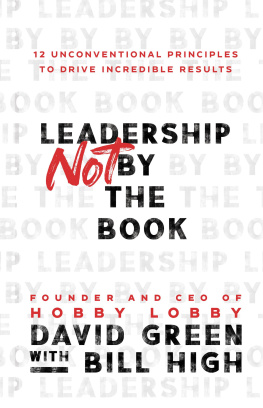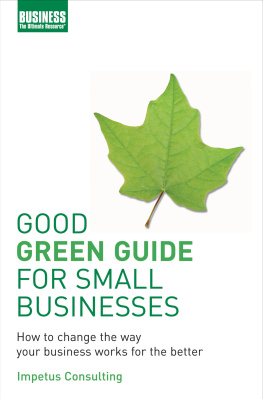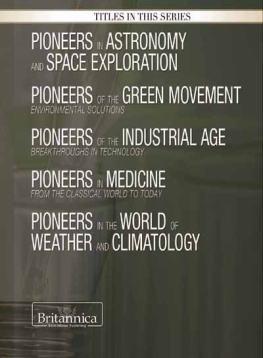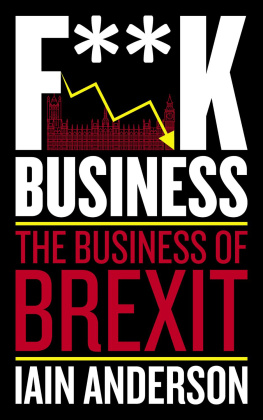
Dedication
This book is dedicated to the people of Interface, Inc., the company I founded in 1973 and which has prospered and grown to dominate its fieldcarpet tile productionglobally.
Carpet tiles, often called modular carpet, were new in America in 1973 and had hardly dented the market, though they were well established in Europe. But at that moment a revolution was taking place in the design of American office interiors. The Open Plan was being adopted: Interior walls were disappearing; the private office was giving way to systems furniture that came with its own partitions; and power and telecommunication wiring, with no walls to house them, were being routed beneath the office floor. This interior demanded modular carpet to provide an acoustical treatment of the floor that also permitted easy access to the wiring beneath the floor.
Interface was a start-up from scratchfrom just an idea to produce carpet tiles in America for the emerging Office of the Future.
After a harrowing experience raising the initial capital, I brought on four very special people: Joe Kyle to head up manufacturing, Don Russell to lead sales and marketing, Don Lee to head up administration, and Albert Ayers to assist Joe in building a factory and installing production equipment. Soon after, they were joined by Graham Scott, who moved to Georgia from England with some of the first European technology that we acquired.
This was our first nucleus of people. Without them, I feel safe in saying, there would be no Interface today.
Thirty-six years later, the numbers have grown to some four thousand people (at one time eight thousand, before a series of divestitures of acquired businesses). When I published Mid-Course Correction (Chelsea Green) in 1998, the number stood at approximately five thousand.
Mid-Course Correction was dedicated to environmentalists everywhere. This book is dedicated to the four thousand environmentalists of Interface, without whose commitment, one mind at a time, to the vision of a sustainable Interface, this extraordinary journey to the symbolic top of a very high mountainMount Sustainabilitywould not be happening.
Yet it is happening, and my heartfelt appreciation goes to each of my fellow mountain climbers. Without them all, this radical industrialist would be out on a thin ledge all by himself.
Contents
Acknowledgments
Patricia Adams Anderson (Pat), my wife of twenty-five years, leads this list for so patiently supporting me in my personal mission to tell the Interface story far and wide. I cant count the nights I have spent awayleaving her alone at homeover the last fifteen years as I have given more than 1,300 speeches and interviews. Those have provided much of the substantive content of this book. So, thank you, my dearest wife and best friend, for your sacrifices that made this book possible.
Others whose significant contributions I want to acknowledge are:
Lisa Lilienthal, Interfaces publicist, and Jo Ann Bachman, my scheduling assistant, who have been constant and dedicated teammates in helping me tell the Interface story around the world, evaluating speaking and interview opportunities, and getting me there and back safely and successfully.
Linda Sutton and Sheila Shealey, who have typed seemingly endless versions of speeches and the many generations of manuscripts that culminated in this book.
Barney Karpfinger, my agent and friend, whose wise guidance through the process of identifying and engaging a publisher has been indispensable, as has been his advice on myriad day-to-day issues around engaging the publishing world.
Robin White, my co-author, whose research into the depths of Interfaces initiatives, and those of other companies as well, required patience I never would have summoned.
George Witte, of St. Martins Press, who saw and appreciated the uniqueness of the Interface story, put his companys money on the line, and personally performed the editing of the manuscript.
These people, along with the people of Interface to whom this book is dedicated, are the reason this book exists. Without them, I could never have come close.
Thank you all.
Finally, I want to acknowledge the primary source of my motivation for pursuing sustainability for Interface: my daughters, Mary Anne Anderson Lanier and Harriet Adelaide Anderson Langford, and their children (my grandchildren), James Augustus Lanier III (Jay), John Anderson Lanier, Patrick William Lanier, Harriet Melissa Langford Heflin, and Cameron McCall Langford. Assuring a healthy future for them and their progeny is what this book is about.
Foreword
As I sit down to write this foreword, I have a lot on my mind. My company, Interface, Inc., has just marked an important milestoneten years until our target year for Mission Zero, for zero environmental footprint, a goal for which we have set 2020 as our deadline. Im immensely proud of Interface, and encouraged about our future. At the same time, I have spent the last year dealing with cancer, thankfully holding my ownbarely.
You may be familiar with my story (before cancer)the epiphany I experienced in 1994 when I read Paul Hawkens book, The Ecology of Commerce, seeking inspiration for a speech to a task force that was organizing at Interface to answer customer concerns about the environment. That change of worldview led me down a road I had never imagined for myself or my petroleum-intensive companyeventually to get off oil.
Distancing ourselves from the wellhead requires that we reimagine the antiquated, linear, take-make-waste industrial system of which we are all a part. And instead, to become part of a thoughtful, cooperative, cyclical system that mimics nature in the way that we design, source, manufacture, sell, installand eventually reclaim and recycleour products. This ambitious undertaking requires new technology, new inputs, and new thinking. It is intensely complicated and, at the same time, completely liberating to think outside the traditional confines of design and manufacturing. Somewhere along the way, the idea that what we were doing was so rightso right, and so smartemerged to propel us forward. At Interface, this new way of thinking is workingour products are better than ever, our employees are more engaged than ever, customers are extraordinarily loyal; and, importantly, costs are down, not up, dispelling the myth that sustainability is expensive. Thats the story youll find in more detail in this book.
Ive always believed that there was something nagging at the back of my mind in 1994something that caused me not only to pick up Paul Hawkens book, but also to be taken so forcefully by his ideas. I was, at the time, sixty years old. Ego may say that the nagging sense was a search for my personal legacy, but maybe it was actually consciencethe thing in us that inherently knows right from wrong. Can it possibly be right that we humans are burning up more than a cubic mile of oil each year, as well as mountains of coal, to power our homes, our cars, our offices, and our factories; fuels that took millions upon millions of years to create, and only a few hundred years to exhaust? Inherently, we must know that this is wrongand stupid. A wise farmer would shake his head and say we were eating our own seed corn. Some capitalists would say we cant afford to do it differently.
But what if those capitalists took into account the value of the services that nature provides? What if the balance sheet and profit-and-loss statement required that we account for the cost of creating air; water purification and distribution (the hydrologic cycle); soil creation and maintenance, thus food; energy and raw materials (at their full costs); climate regulation; pollination; seed dispersal; nutrient cycling; an ultraviolet radiation shield; flood and insect control; and net primary production, the product of photosynthesis? Surely, even the capitalists will know that without any of these, there would be no economy in the first place.
Next page
